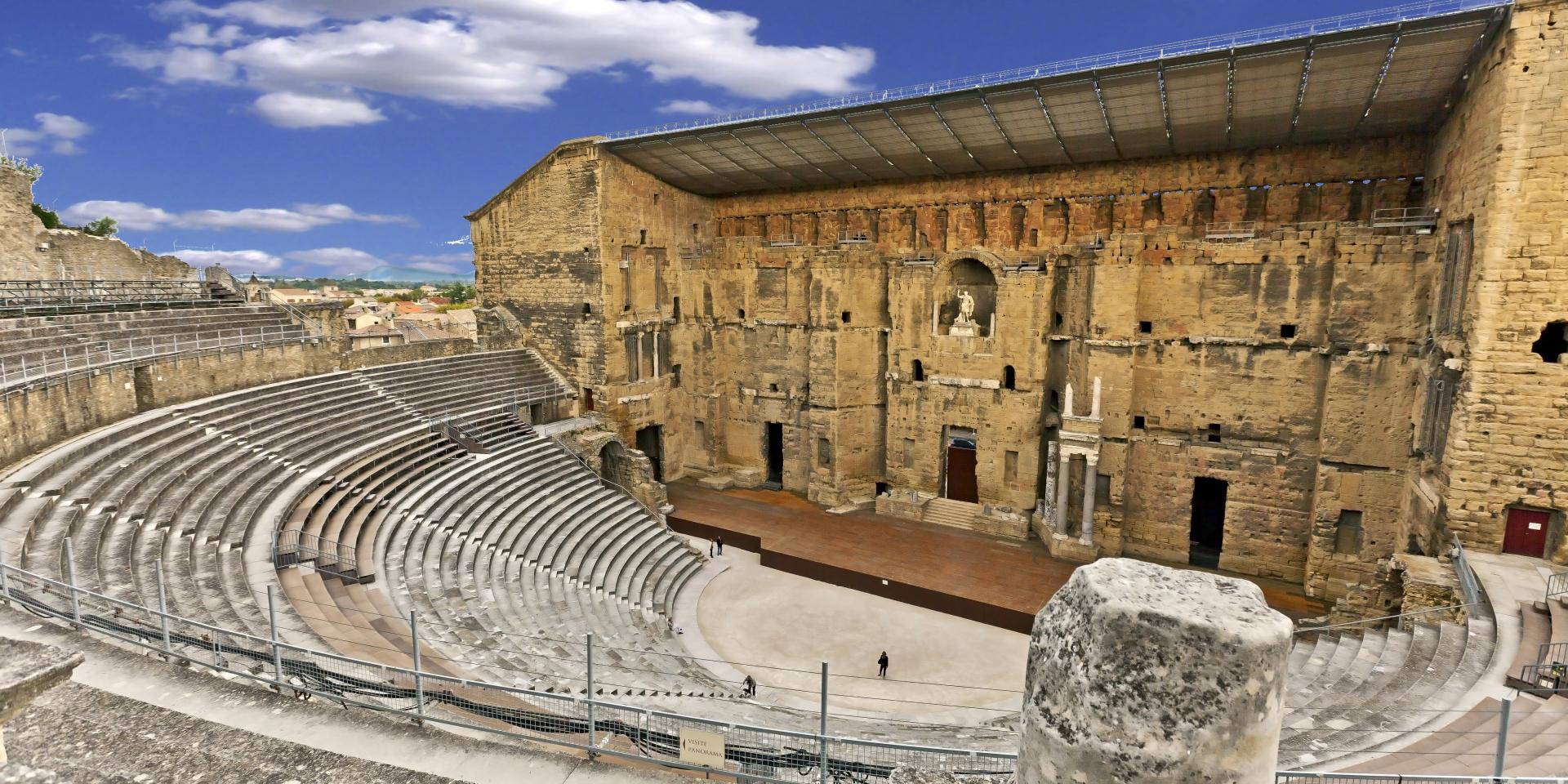Orange and Arles
UNESCO World Heritage sites
Provence is home to three Roman sites featured on the UNESCO World Heritage listing. Two of them are located in Orange, or “Arausio” as it was originally named by the Romans, founded in 35 BC: the Arc de Triomphe and Théâtre Antique. An honorary passage and symbol of the empire’s glory, the Arc de Triomphe (Triumphal Arch) marked the boundary between the original city and world of the dead. Set in the heart of Orange, the incredibly well-preserved Théâtre Antique (Roman Theatre), boasts extraordinary acoustics and provides the magnificent setting for the internationally-renowned Chorégies d’Orange annual opera and classical music festival. Also a UNESCO World Heritage site, the Arènes d’Arles in Arles was built using the same drawings as the Coliseum in Rome and was a stage for gladiator fights. Don’t miss a visit to the Musée Départemental de l’Arles Antique : the museum harbours the astonishing wreck of a 31-metre Roman barge unearthed in the Rhône river in 2011.



